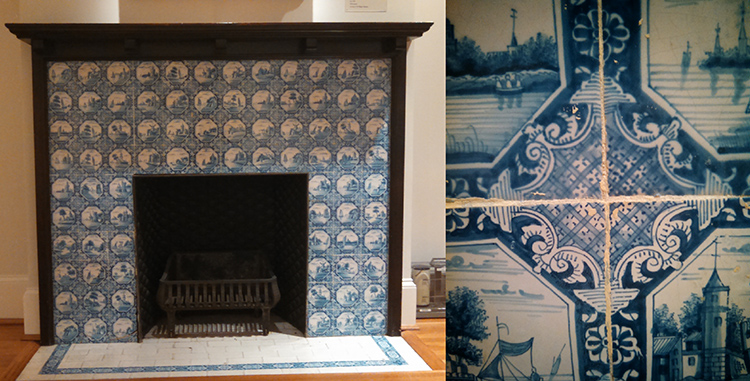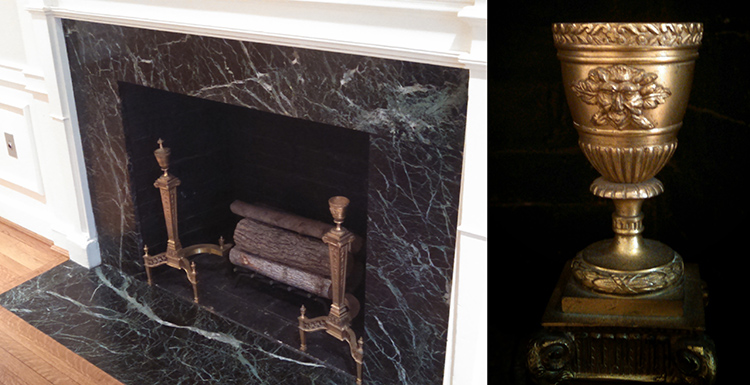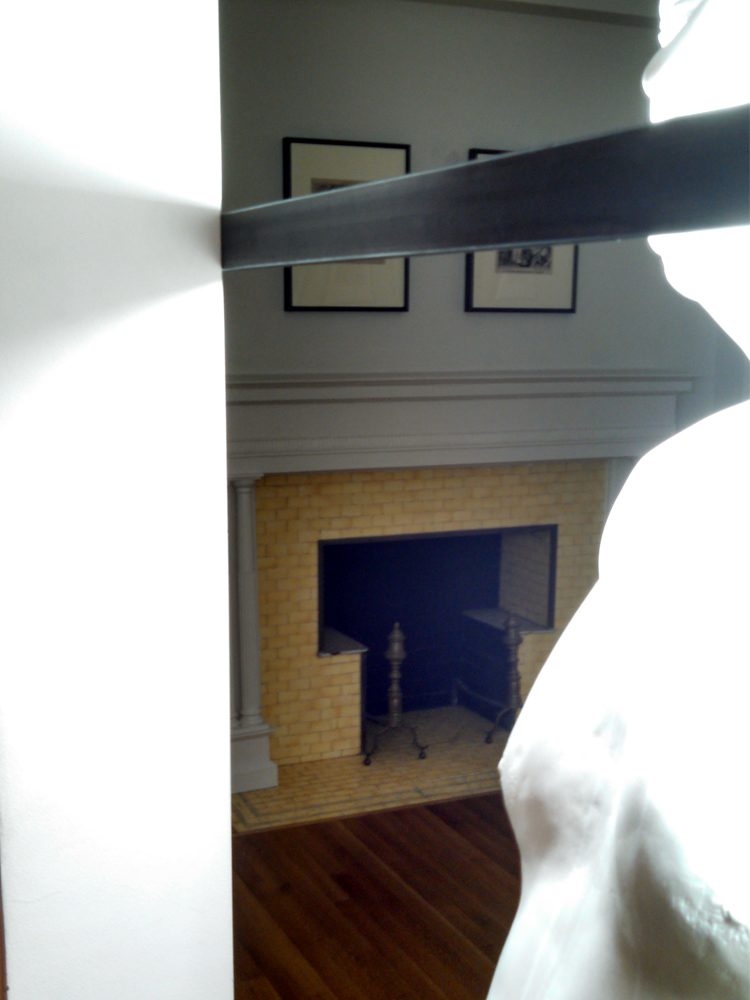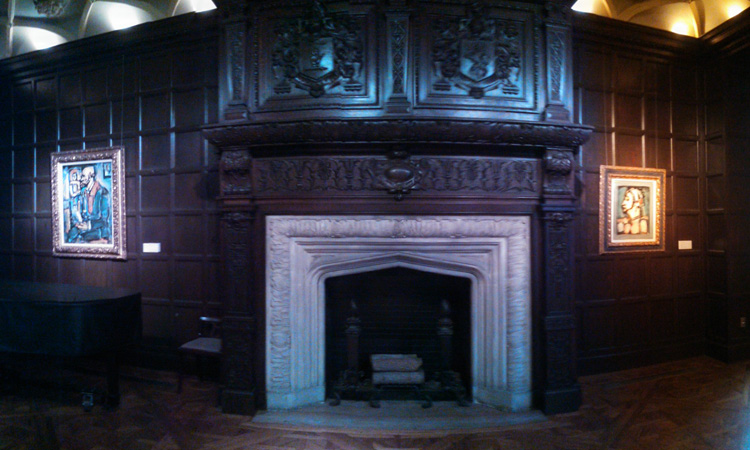Yesterday, I posted about the details that can emerge if you focus on what is around (or specifically, below) the art on the walls. Here are some more examples of the tiny stories told by the tiny details and embellishments on the fireplaces sprinkled throughout the museum.

Over eighty ornate blue and white tiles depict scenes of castles, ships, and farmers. Each tile is different from its neighbor, showing the artistry of this work on a fireplace in an upstairs room of the original Phillips house.

Is that a face hidden in the East Parlor fireplace andiron, or just an artful arrangement of leaves?

Bernardi Roig’s An Illuminated Head for Blinky P. (The Gun) cuts off a bright yellow fireplace from closer observation. What other artworks, and what other shoes, have come and gone before this yellow brick fireplace?
Emily Hurwitz, Marketing and Communications Intern

